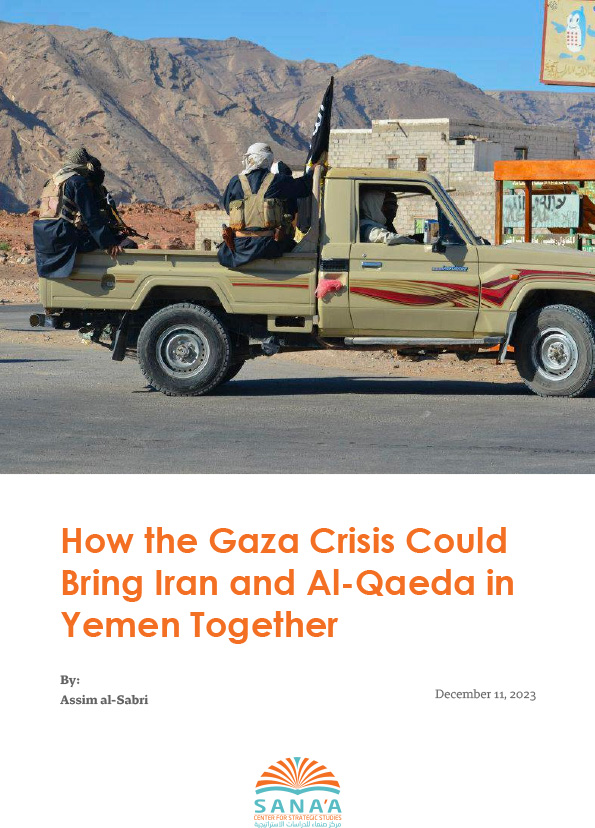In early November, the Secretary-General of Hezbollah, Hassan Nasrallah, said the Iranian-led Axis of Resistance in the region had no prior knowledge of the Al-Aqsa Flood operation carried out by Hamas against Israel on October 7. This could be true from a tactical and operational perspective, since Hamas’ military wing, the Qassam Brigades, appears to have prepared the operation under a veil of secrecy, excluding even senior Hamas figures. Ultimately, this discretion was one of the reasons for the operation’s success.
When viewing the operation from a broader strategic perspective, however, it becomes difficult to separate it from escalatory Iranian language and actions in the preceding weeks. On the sidelines of the UN General Assembly meeting in September, Iranian President Ebrahim Raisi warned Saudi Arabia and other Gulf states that normalization with Israel was bound to fail. In Syria, the Commander of the Quds Forces of Iran’s Islamic Revolutionary Guard Corps (IRGC), General Esmail Qaani, made an unusual visit to Damascus around September 21 for what was described as joint military maneuvers. The Palestinian Islamic Jihad group announced military exercises in Gaza just five days before the Al-Aqsa Flood attacks, prompting the Israeli army to declare it was watching the situation.
Meanwhile, in Yemen, Tehran’s ally the Houthi group (Ansar Allah) resumed operations on the border with Saudi Arabia, killing several Saudi and Bahraini soldiers in separate incidents. The Houthis also organized their largest-ever military parade on September 21, displaying a new generation of missiles and drones that will be of interest to the three countries that have been on the receiving end of Houthi attacks – Saudi Arabia, the UAE, and Israel.
Iran also went a step further in September by adding one untraditional element to its strategy. It reached out to a group very much on the margins of its sphere of influence, Al-Qaeda in Yemen, according to two sources within the group, one a security officer and the second a senior foreign jihadist. This outreach was reportedly led by the veteran Egyptian jihadist leader living in Iran, Mohammed Salah al-Din Zaidan, also known as Saif al-Adl.
Saif al-Adel and Iran
Saif al-Adel became the de facto leader of Al-Qaeda’s global organization after the killing of its previous leader, Ayman al-Zawahiri, in 2022. He maintained a relationship with former Islamic Revolutionary Guard Corps (IRGC) Quds Forces commander Qassem Soleimani starting in the late 1990s, which continued even after the Iranian regime detained and kept him under house arrest from 2003.
In Saif al-Adl’s view, the supreme ideological objective of Al Qaeda – fighting the West and its allies in the region – necessitates a strategic alliance with Tehran. This is why, even after being released from house arrest in a prisoner exchange deal between Al-Qaeda’s Yemen branch and the Iranian regime in 2015, Saif al-Adl chose to remain in Iran of his own volition, making it the permanent base of his jihadist activities.
In 2018, Saif al-Adl established his own Al-Qaeda branch in Syria under the name of Hurras al-Din. Since then, Saif al-Adl has been working to achieve two main objectives: increase his power within other important Al-Qaeda branches (namely Yemen, Somalia, and North Africa); and market his strategic vision for the group, which is based on abandoning attacks against local adversaries in favor of external operations targeting Western interests, ideally in alliance with Iran. The demise of Al-Zawahiri gave Saif al-Adl a chance to strengthen his organizational and operational influence among Al-Qaeda’s various branches. Now, the Al-Aqsa Flood attacks may have created an opening for his vision of cooperation between jihadist and Iran-aligned resistance groups.
In the second half of 2023, Iranian suspicions rose that reconciliation with Riyadh – achieved earlier in the year through Chinese mediation – would not after all herald a new regional security structure in which the West was not dominant. Some in the regime came to believe that rapprochement with Riyadh was little more than a Saudi maneuver to neutralize the Iranian threat while continuing to strengthen ties with the United States and moving toward normalization with Israel.
Around the same time, the IRGC reportedly offered Saif al-Adl the option of transforming his relationship with Iran from one of security and intelligence coordination into a strategic alliance. It proposed that Yemen should be the testing ground for this approach. The Sana’a Center obtained this and the following information from the security officer and senior foreign jihadist within Al-Qaeda in Yemen.
A week before the Al-Aqsa Flood attacks, Saif al-Adl reportedly sent a loyalist to Yemen to deliver a written message, commending the Yemeni Al-Qaeda branch for its recent activities against local forces allied with Washington and calling on the group to prepare for a new stage of action against Western interests in the region. According to the two Al-Qaeda sources, the letter included a recommendation that the group enter into a semi-formal strategic alliance with Iran, stop all fighting and operations targeting Iran-allied groups in the region (an implicit reference to the Houthis), and thus become an active force in the Iranian geopolitical axis opposed to the West.
In exchange, Iran would provide the necessary financial, technical, and weapons support to enable Al-Qaeda to expand operations targeting Western interests in Yemen. Al-Qaeda would also be given space to move freely and create safe havens in areas controlled by Iran and its allies, particularly in Syria and Yemen. Saif al-Adl, as the effective leader of the overall group after Al-Zawahiri’s death, was apparently in a position to negotiate such terms with Tehran.
Reactions to the Letter in Yemen
Saif al-Adl’s letter was handed over to two people – his son, who resides in Yemen and is known as Ibn al-Madani, and the leader of Al-Qaeda in Yemen, Khaled Batarfi. The two leaders were inclined to accept the proposal but faced opposition from other key figures, including Khabib al-Sudani and Saad al-Awlaqi, who favored maintaining the group’s independence and its formal position of enmity toward the Houthis, though they said they would support limited coordination against Western targets. During the initial discussions, most mid-level leaders and the organizational base sided with Al-Sudani and Al-Awlaqi. At the same time, there were some within the group arguing for a resumption of fighting against the Houthis in Al-Bayda governorate, which Batarfi had suspended two years ago.
Operation Al-Aqsa Flood, however, has provided a further catalyst that could motivate the group generally to consider resuming external operations at the expense of local activities. Batarfi has now tasked Saif al-Adl’s son, Ibn al-Madani, with arranging operations targeting Western interests, and to that end, Ibn Al-Madani has made secret trips to Al-Mahra and Hadramawt governorates to identify potential future targets.
As the Israeli war on Gaza continues, sentiment within Al-Qaeda in Yemen seems to be divided. Most members are open to the idea of an alliance with any actor to support Palestinian militant groups in Gaza. In short, Israel’s latest military campaign may be contributing to realizing Saif al-Adl’s long-time goal of bringing Sunni and Shia militant groups together.
But rivals to Saif al-Adl in Al-Qaeda have a different view. They think the Al-Aqsa Flood operation is a lesson in the dangers of working with Iran. From their perspective, Tehran is happy to encourage Sunni militant groups to rush into conflicts on its behalf while risking little itself. They cite the fact that Iran has yet to provide serious support to Hamas or take action to save Gazans facing death and displacement. In the view of one jihadist leader: “Unfortunately, we have seen massacres that are similar to, and even worse than, the Israeli massacres in Gaza, committed by Bashar al-Assad, Hezbollah, and (Iranian-backed) Popular Mobilization Forces against Sunnis in Syria and Iraq.”
This analysis is part of a series of publications produced by the Sana’a Center and funded by the government of the Kingdom of The Netherlands. The series explores issues within economic, political, and environmental themes, aiming to inform discussion and policymaking related to Yemen that foster sustainable peace. Views expressed within should not be construed as representing the Sana’a Center or the Dutch government.

 اقرأ المحتوى باللغة العربية
اقرأ المحتوى باللغة العربية
